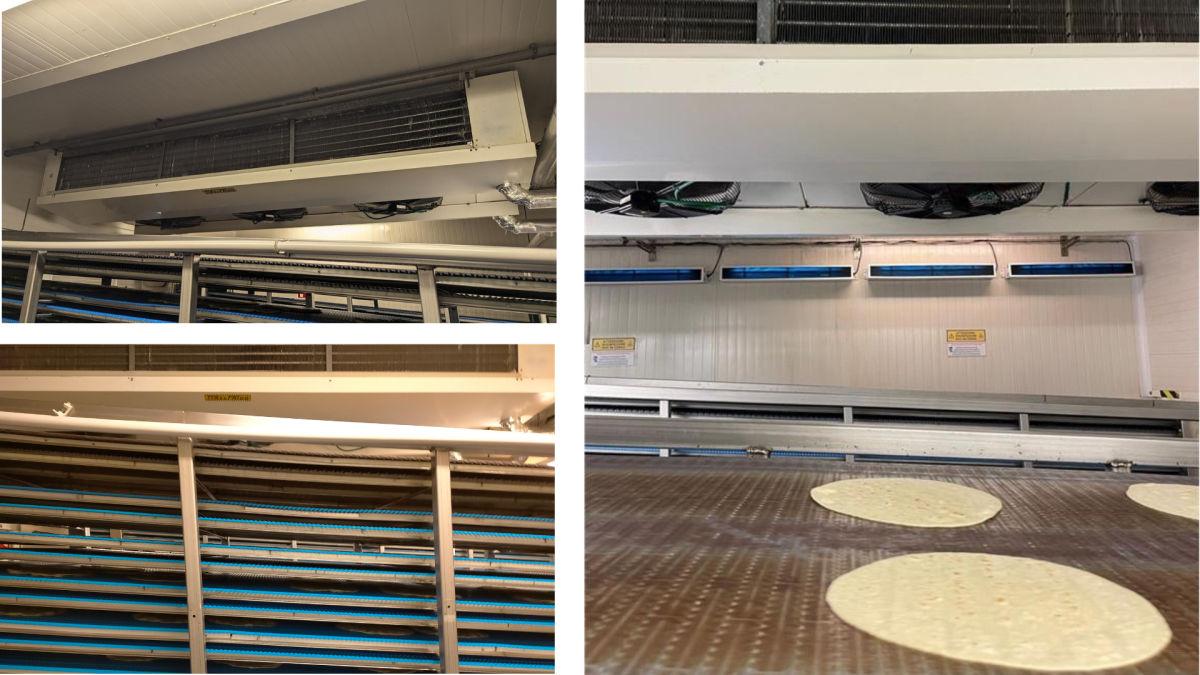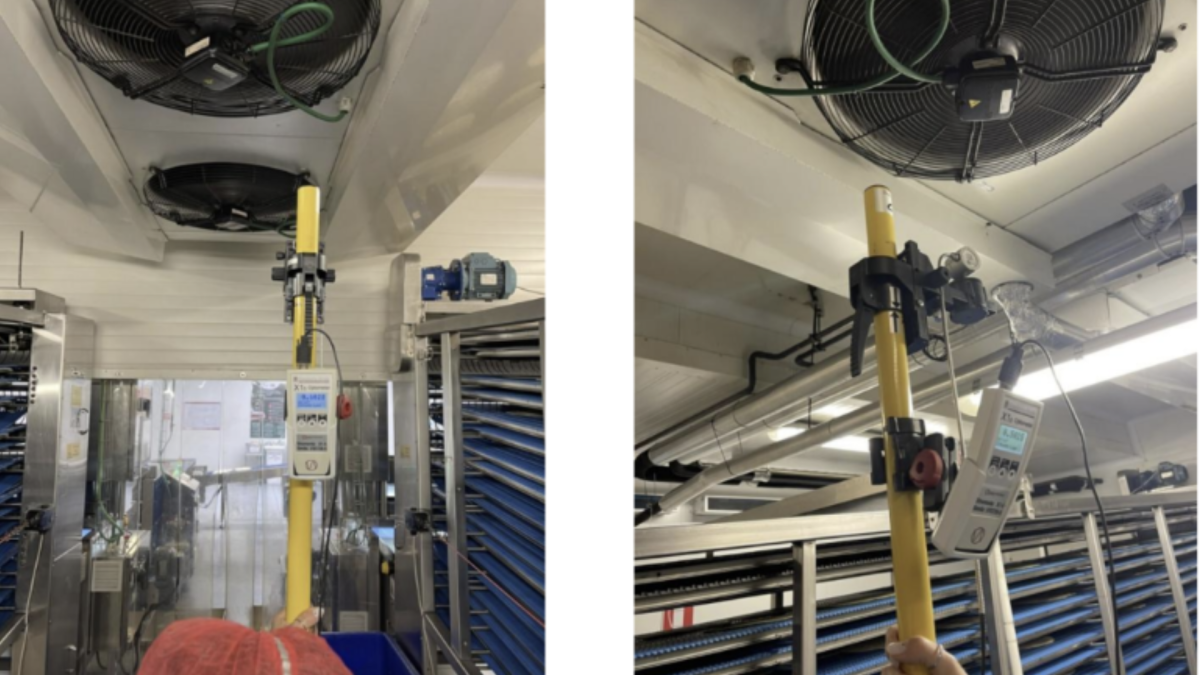CHALLENGES
The world’s largest baking company specializes in the high-volume production of buns and tortillas, delivering consistently high-quality products that reflect the company’s reputation for excellence.
Several months ago, the team adopted a holistic strategy to enhance product protection by integrating UV-C technology. They began by installing UV-C systems within their air handling units (AHUs) to improve overall indoor air quality, but soon recognized the need to target critical zones where precise ventilation control directly impacts product integrity.
Focus was placed on the tortilla production line, particularly during the cooling phase, where hundreds of tortillas travel along two multi-tier conveyor belts. This stage relies on a forced airflow system, driven through a row of cooling evaporators, designed to rapidly bring down
the tortillas' temperature.
Nourishing a Better World.
A global leader in the baking industry has proactively embraced innovation to protect food quality and workplace safety.
With a strong commitment to excellence and continuous improvement, the company adopted UV-C disinfection technology—a science-based solution that enhances hygiene standards without relying on chemical additives.

PROPOSED SOLUTION
After a first visit of our team for the commissioning, a total of 13 UV- FLOW-90H-C-WH systems were strategically installed—6 units along one wall and 7 along the opposite wall, precisely angled to irradiate the surface of the cooling evaporators.
The installation was executed uniformly, and the systems effectively confined UV-C light to the upper zones of the room, ensuring both optimal disinfection coverage and adherence to safety standards.

POST INSTALLATION
After installation, UV-C validation confirmed the system was effectively targeting critical contamination zones—specifically the space between the two multi-level conveyor belts during the cooling phase. UV-FLOW devices were strategically placed to ensure continuous irradiation of airflows and surfaces where airborne spores are most likely to circulate and come into contact with exposed bakery products. Once spores settle on the product surface, it’s often too late —removal becomes nearly impossible. For this reason, the setup prevents spore spread at the source, protecting product quality and ensuring hygienic processing conditions, thus meeting safety standards for both products and employees.
Safety signage was installed per regulations, and a detailed report was provided to the facility manager.
A verification test was conducted by a C-GUVMP accredited by NALMCO, in accordance with the standards outlined in the GUV Certification Training Program.
Find more here:
https://www.nalmco.org/guv-training

The decision-making process began when the Quality team received internal insights about UV light applications in similar production settings. A root cause analysis clearly identified the contamination source, and UV-C emerged as a promising remedy.
But why Light Progress?
1. Proven experience and market references
In-depth knowledge of UV-C and ventilation dynamics providing tailored recommendations that addressed custom specific needs where a key to a reliable but easy installation.
3. Readiness to support certified installations
While it’s still early to evaluate the full impact, we believe this technology holds great potential for disinfection and for extending the shelf life —offering a valuable alternative chemical additives.”




